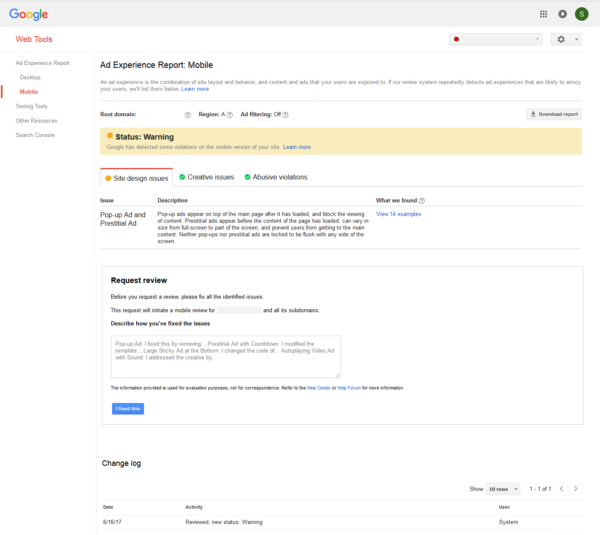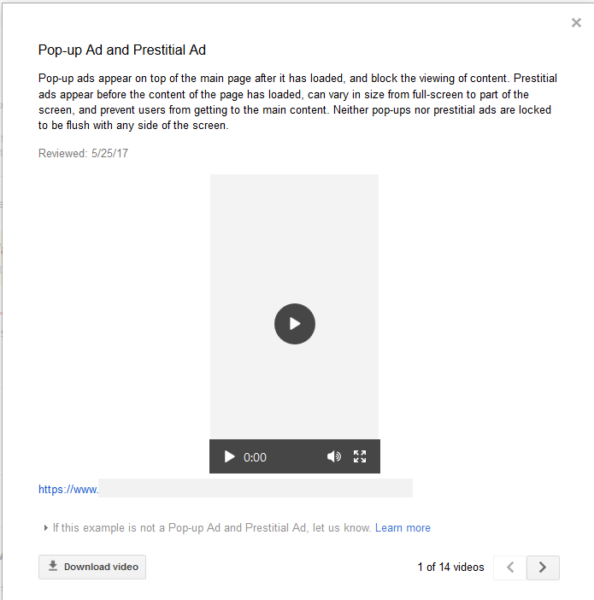
“Turn and face the strain” of Google ch-ch-changes
In the words of Heraclitus, “the only thing that is constant is change.” And working in publishing, you probably find this especially true. Google changes every day, and so do we. Certainly other professions have their own versions of change to deal with: mechanics had to cope with the switch to electric cars, and environmentalists have to hear climate change is fake news. We all have our struggles.
The biggest changes in digital publishing, if you’re doing it right, are Google changes. And I say “doing it right,” referring to those who are publishing free content on the regular to attract and convert new visitors and email subscribers. Because for these publishers, search engine traffic drives the bulk of your conversions, that’s why you can grow more quickly than your competitors.
[text_ad]
But there we go, lending our future to a false god, Mr. Google. So let’s take a look at all the ways Google has thrown us a wrench lately, and how publishers have coped just fine.

1. January 10, 2017, Mobile Interstitial Penalty – Google wasn’t shy about this one. They told us that we needed to remove any pop-ups or floaters from mobile pages, or at the very least, from the first page a visitor sees. Otherwise, we’d lose rank. Most publishers obliged, and either turned them off on mobile, or got crafty with new types of ads, like placemat ads.
2. September 23 – October 26, 2016, The Penguin Saga – Over the course of a month, Google released a couple different versions of Penguin. The first was a bit over the top, and killed a bunch of otherwise reputable websites by penalizing sites that had bad inbound links. Google quickly released an update that devalued bad links, rather than penalizing websites, and the final Penguin update at the end of October removed any penalties to those sites that were affected. The lesson we all learned here was not to invest in black-hat link-building scams. And if you did at some point, Google offered up a disavow tool, to be used with caution.
3. February 23, 2016 – The Adwords Shakeup – On this day, Google decided to adjust how paid ads would display on their pages, which in turn, affected organic search click-through rates. By removing ads on the right-hand side of search results pages, and adding more to the top of the page, it pushes down organic listings, sometimes even below the fold on competitive keywords. There’s no real coping method here, other than understanding your data, if you were previously ranking organically on a desirable keyword and saw your numbers drop.
4. October 26, 2015, RankBrain – This was an exciting update for us SEO nerds, because rather than it being a flash of light in algorithm changes, this was merely the announcement after a very slow update we had already been experiencing for at least six month. RankBrain updated search results to focus on intent. So for example, what does Google think the intent of the user is when they search for a particular phrase? If you Google the term “caribbean travel” you will get a variety of things: travel agents, flight prices, and news from the caribbean. The consensus from Google is that someone searching for “caribbean travel” is in a commercial mode, and they want to purchase a trip, rather than plan one. To remedy this, publishers started Googling their keyword terms before writing articles and optimizing posts. Instead of “caribbean travel”, a publisher like Conde Nast Travel could write a post about the “best caribbean islands to visit,” where Google lists all travel articles, and it has an abundant 4,400 people searching for the term every month. Not too shabby! Here’s an article on how to write with intent in mind, to accommodate RankBrain.
5. April 22, 2015, Mobilegeddon – This update turned out to be not as scary as everyone thought it would be. The general gist was that mobile search listings would be different than desktop listings. And if your site was fast and mobile friendly, then you may rank higher in mobile results than a site that was slow, chunky, and non-responsive. To accommodate, many publishers quickly made their sites responsive, which was truly a blessing to the internet, regardless. The preference for AMP pages came in later, but was part of Google’s overall preference for mobile pages to be fast, easy to digest, and mobile-friendly. Read more about mobile-friendly and AMP pages.
Coming up: Google cracks down on interstitials for Publishers using Adsense
In July, Google wrote on their Inside AdSense blog, that they are “no longer permitting the placement of Google ads on pages that are loaded as a pop-up or pop-under.” They wrote, “Additionally, we do not permit Google ads on any site that contains or triggers pop-unders, regardless of whether Google ads are shown in the pop-unders.”
Google has begun sending emails and updating Google Console for publishers who are in danger of being penalized. They explained further on their blog, “To help these publishers improve their ads experiences, we review sites daily and record videos of the ad experiences that have been found non-compliant with the Better Ads Standards. If a site is in a “failing” or “warning” state, their Ad Experience Report will include these visuals, along with information about the Better Ad Standards and how the issues may impact their site.”
Below is an example of a notice received by one of our clients, who shared it with us:

The notice above reads: Pop-up ads appear on top of the main page after it has loaded, and block the viewing of content. Prestitial ads appear before the content of the page has loaded, can vary in size from full-screen to part of the screen, and prevent users from getting to the main content. Neither pop-ups nor presitital ads are locked to be flush with any side of the screen
As mentioned by Google, these notices go out to Adsense publishers, are extremely personalized, even including videos of how your website performs. We’ve anonymized the images, but you can see Google has identified a specific URL, and the video displays what a user sees when they arrive on the website.

Once a publisher reads their best practice guide to ads, and updates accordingly, they can submit their website for re-review. They suggest “less disruptive alternatives like full-screen inline ads,” and note, “They offer the same amount of screen real estate as pop-ups—without covering up any content.” For pop-up ads, they are especially combatting ads that require you to wait to view the ad for a certain amount of time before you can view the content. Also, when ads slow down the page, and ads that make noise, or animate are on the no-no list.
If you need a captain to help you navigate the seas of Google changes, while building a more search-friendly website, schedule a time to talk with us.
Which Google changes have thrown you the biggest wrench, and how did you persist?


